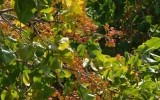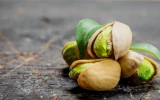15 Most Common Pistachio Tree Types (with Pictures to Identify)
Pistachio trees are native to the Middle East and Central Asia and have been cultivated for thousands of years. These trees are known for their unique appearance, with their distinctive light-gray bark and lush, green foliage. In this article, we'll take a closer look at the 15 most common types of pistachio trees, with pictures that will help you identify each variety.
The most common Pistachio species include the following: Pistacia aethiopica, Pistacia atlantica, Pistacia chinensis, Pistacia eurycarpa, Pistacia khinjuk, Pistacia integerrima, Pistacia lentiscus, Pistacia mexicana, Pistacia x saportae, Pistacia terebinthus, and Pistacia vera.
Pistacia cucphuongensis, Pistacia weinmannifolia, Pistacia malayana, and Pistacia falcata also make it to the list of pistachios species. Let's take a further look at each of these species and their unique differences.
Summary
- Pistacia atlantica has adapted to survive and thrive in arid and semi-arid regions, exhibiting efficient water use and the ability to grow in rocky, mountainous areas with poor soil quality, developing mechanisms that tolerate high levels of salinity in the soil and withstand temperature extremes.
- Pistacia lentiscus is notable for its adaptability to poor, rocky soils, attributed to its deep and extensive root system, high drought tolerance, and physiological and biochemical adaptations for coping with harsh environmental conditions prevalent in rocky soils.
- Pistacia mexicana exhibits remarkable tolerance to heat and arid environments by forming symbiotic relationships with soil microorganisms, such as mycorrhizal fungi, to enhance its access to nutrients and water in nutrient-poor and dry soils.
- Pistacia malayana, native to tropical regions, is well-adapted to warm, humid climates and is cultivated for its ornamental value, valuable wood, and edible fruits.
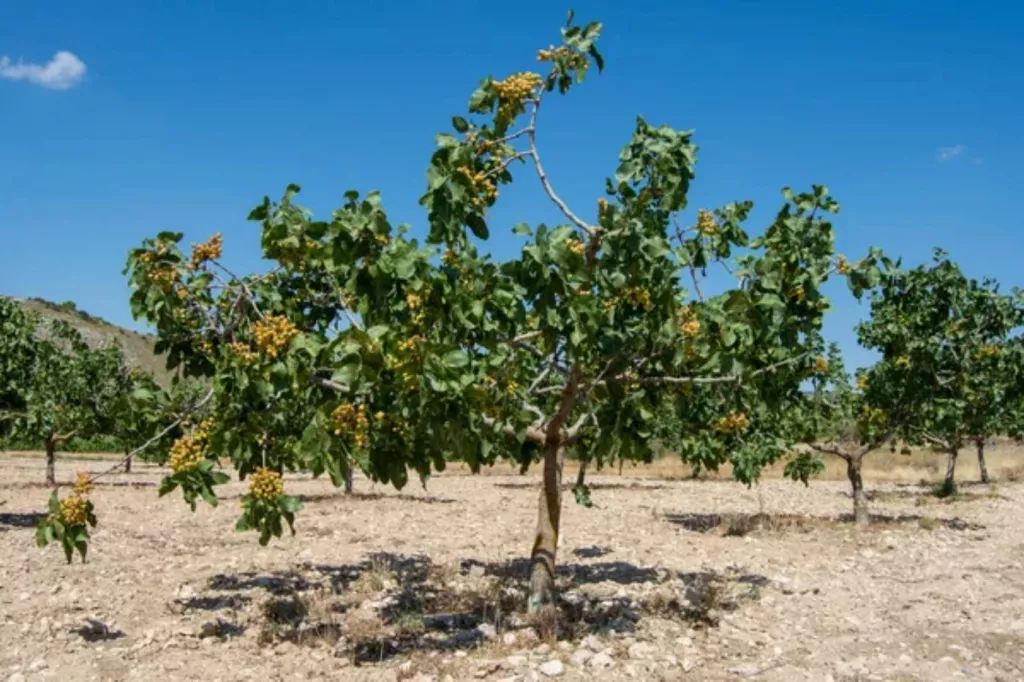
On this page:
The Most Common Pistachio Tree Types
The table below highlights the unique characteristics of different pistachio species:
| Pistachio Species | Outstanding Unique Feature |
|---|---|
| Pistacia aethiopica | Small size and strong flavor |
| Pistacia atlantica | Drought tolerance and ability to grow in harsh conditions |
| Pistacia chinensis | High resistance to pests and diseases |
| Pistacia eurycarpa | Large nut size and high yield |
| Pistacia khinjuk | Cold hardiness and ability to thrive in cooler climates |
| Pistacia integerrima | Medicinal properties and use in traditional medicine |
| Pistacia lentiscus | Ability to grow in poor, rocky soils |
| Pistacia mexicana | Tolerance to heat and arid environments |
| Pistacia x saportae | Unique flavor profile and culinary versatility |
| Pistacia terebinthus | Ornamental value and attractive foliage |
| Pistacia vera | Commercially cultivated for its large, flavorful nuts |
| Pistacia cucphuongensis | Endemic to Vietnam and rare in cultivation |
| Pistacia weinmannifolia | Unique leaf shape and ornamental value |
| Pistacia malayana | Tropical origin and preference for warm, humid climates |
| Pistacia falcata | Small nut size and distinctive elongated shape |
Pistacia aethiopica is known for its strong and distinctive flavor
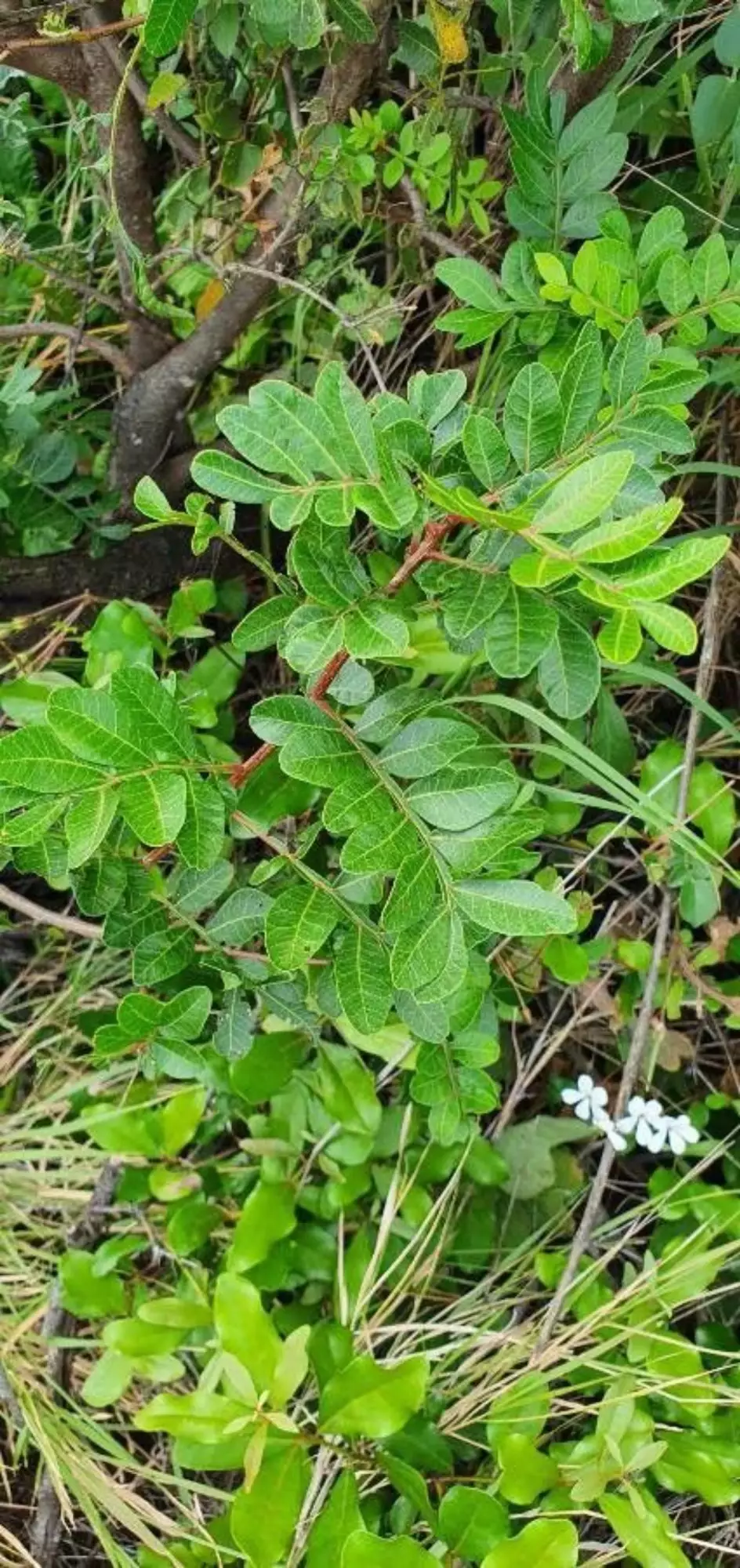
Pistacia aethiopica is a species of flowering plant in the cashew family, Anacardiaceae, that is native to East Africa. It is commonly known as the Ethiopian pistachio or the African pistachio.
The Ethiopian pistachio tree typically grows to a height of about 6-10 meters, making it an ideal choice for smaller gardens or landscapes. Its compact size also makes it suitable for urban environments where space may be limited.
The tree is valued not only for its ornamental qualities but also for its edible nuts, which are highly prized for their rich and robust flavor.
The nuts of this tree are small in size but pack a powerful taste. They are often used in traditional African cuisine to add a depth of flavor to various dishes.
The strong flavor of the nuts makes them a popular choice for enhancing the taste of both sweet and savory recipes. In addition to being consumed as a culinary ingredient, the nuts are also used to extract oil, which is valued for its unique taste and nutritional benefits.
In terms of cultivation, Pistacia aethiopica thrives in warm, arid climates and is well-adapted to drought conditions. It is a hardy tree that can withstand harsh environmental conditions, making it a resilient choice for cultivation in semi-arid regions.
The tree's ability to tolerate dry spells and its low maintenance requirements make it an attractive option for sustainable agroforestry practices in its native range.
Pistacia atlantica is well-known for its drought tolerance and ability to thrive in harsh conditions

Pistacia atlantica, also known as the Mt. Atlas mastic tree, is a species of flowering plant in the cashew family, Anacardiaceae. It is native to the Mediterranean region, particularly in countries such as Morocco, Algeria, Tunisia, and parts of Iran and Iraq.
One of the most remarkable features of Pistacia atlantica is its exceptional drought tolerance. This tree has adapted to survive and thrive in arid and semi-arid regions where water is scarce.
It has developed various physiological and anatomical mechanisms to cope with prolonged periods of drought. For instance, it exhibits efficient water use through mechanisms such as deep root systems that can access water from deep soil layers.
Additionally, the tree can close its stomata during periods of water scarcity, reducing water loss through transpiration.
Pistacia atlantica also has the remarkable ability to grow in harsh environmental conditions. It is often found in rocky, mountainous areas with poor soil quality, where many other plant species struggle to survive.
The tree has developed mechanisms to tolerate high levels of salinity in the soil, allowing it to grow in areas where salt content may be a limiting factor for other plants.
Furthermore, it has evolved to withstand temperature extremes, including hot summers and cold winters. Its ability to thrive in such diverse climatic conditions makes it a highly resilient and adaptable species.
Pistacia chinensis is well-known for its high resistance to pests and diseases
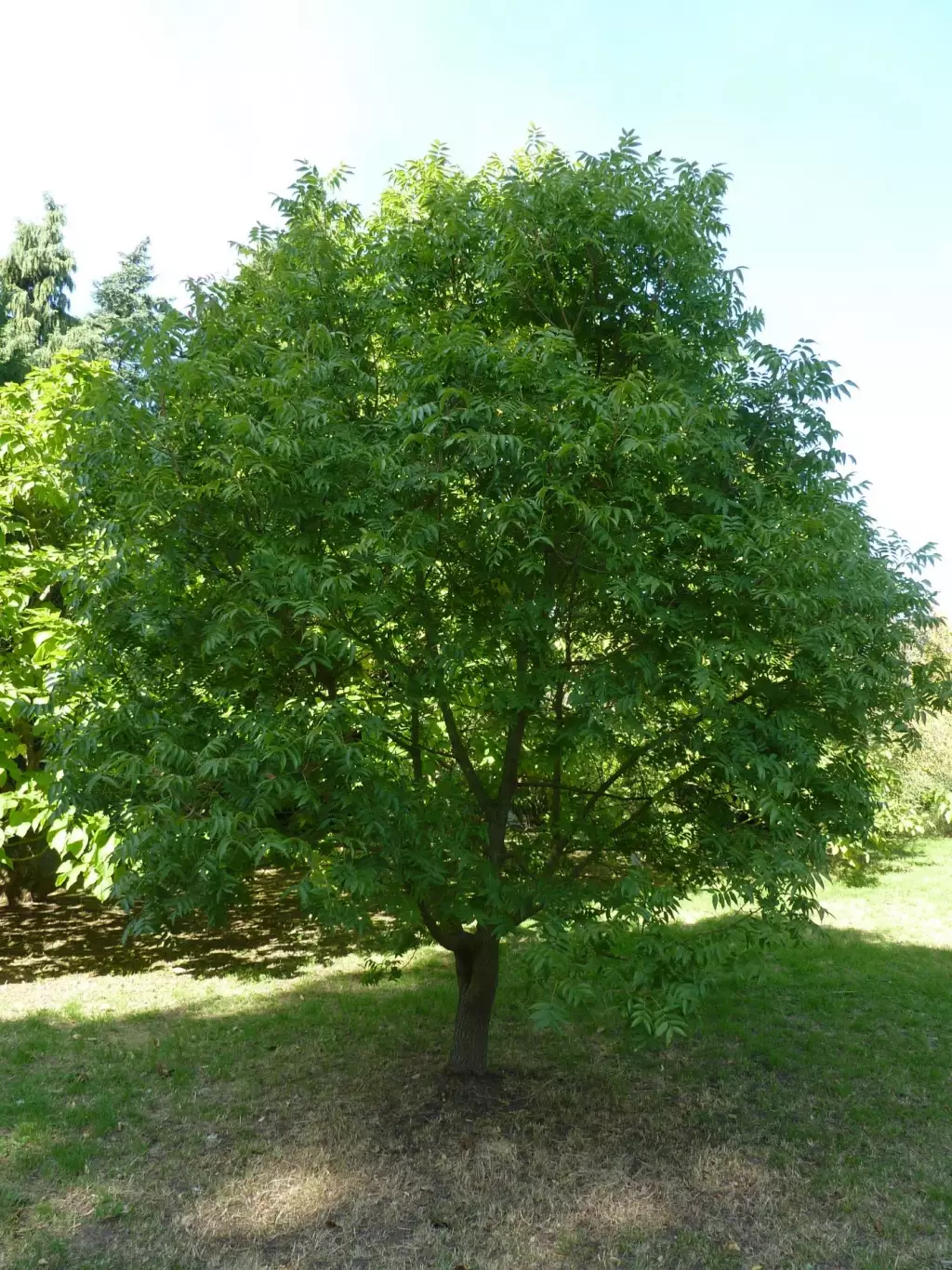
Pistacia chinensis, commonly known as Chinese pistache, is a deciduous tree native to China and Taiwan. It is widely cultivated for its ornamental value, as well as for its high resistance to pests and diseases.
The high resistance of Pistacia chinensis to pests and diseases makes it a desirable choice for landscaping and urban planting. This resistance reduces the need for chemical pesticides and fungicides, making it an environmentally friendly option for gardeners and landscapers.
Pistacia chinensis has evolved various chemical compounds and physical barriers that make it less susceptible to attacks from insects, fungi, and other pathogens.
The tree produces compounds that are toxic or unpalatable to many pests, thereby deterring them from feeding on its leaves or stems.
Furthermore, the structure of the tree, including its bark and leaf composition, may contribute to its resistance. The thick, rugged bark of the Pistacia chinensis tree protects against certain pests and diseases, while its leaves may contain compounds that deter herbivorous insects.
Pistacia eurycarpa is highly valued for its large nuts and high-yield
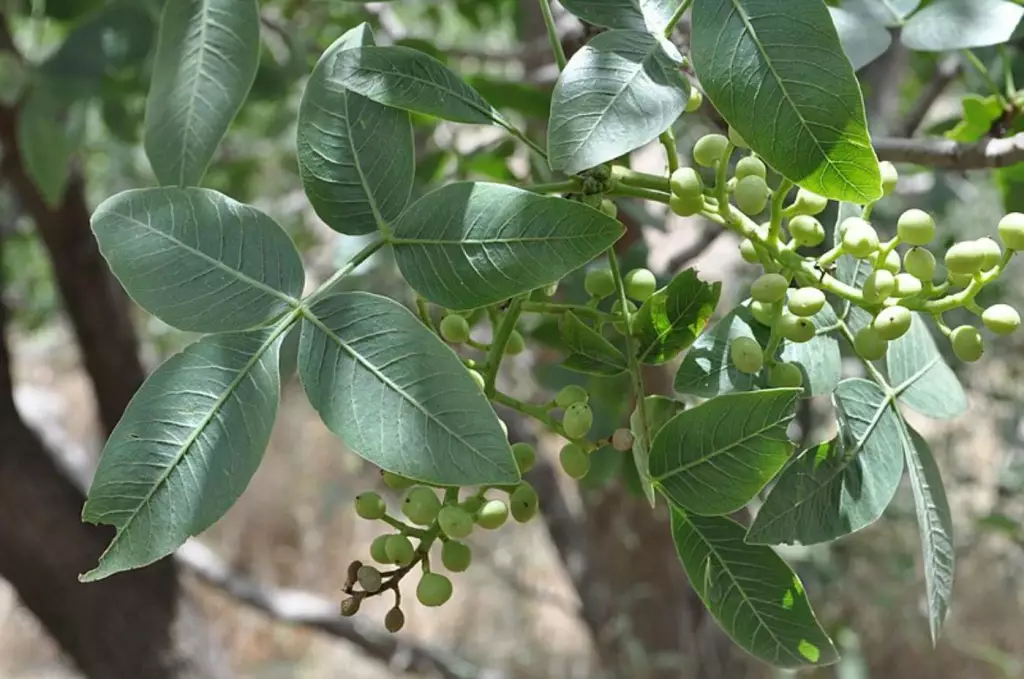
Pistacia eurycarpa is a species of pistachio tree known for its large nut size and high yield. This deciduous tree is native to the Middle East and Central Asia, where it thrives in arid and semi-arid climates.
The large nut size of Pistacia eurycarpa is a desirable trait for both consumers and producers. Larger nuts often indicate a higher content of edible kernel, which is the most valuable part of the pistachio.
In addition to the large nut size, the high yield of Pistacia eurycarpa makes it an economically attractive crop. The tree is known for its ability to produce a significant quantity of nuts, resulting in a potentially higher return on investment for farmers.
To learn more about the future projections on the profitability of pistachio farming, you can read this article.
Pistacia khinjuk is a cold-hardy species
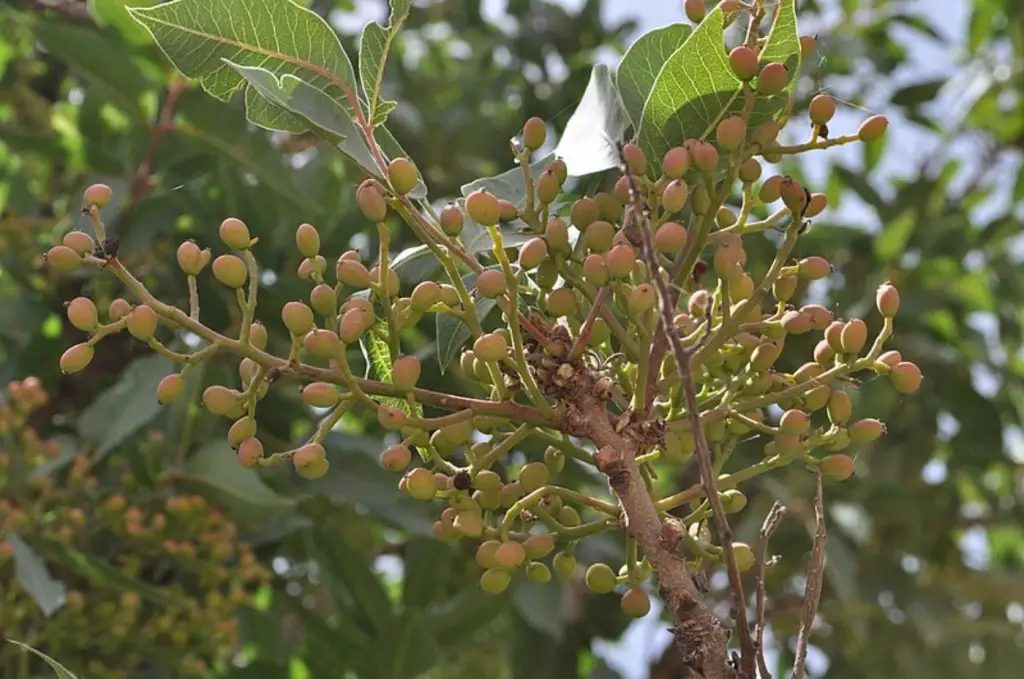
Pistacia khinjuk, also known as wild pistachio or Afghan pistachio, is a species of flowering plant in the cashew family, Anacardiaceae. It is native to regions of Central Asia, including Afghanistan, Iran, and Pakistan.
This species is known for its ability to thrive in arid and semi-arid climates, but it also exhibits notable cold hardiness, allowing it to survive and even thrive in cooler climates. The density of pistachio trees found in regions with cooler climates are advised to be around 60-100 trees per acre.
The plant has developed mechanisms to cope with cold stress, such as adjusting its metabolic processes and cellular structure to endure low temperatures. This cold hardiness enables Pistacia khinjuk to grow in areas where other species of pistachio may struggle to survive.
In addition to its ability to tolerate colder climates, Pistacia khinjuk is also valued for its resilience to drought and poor soil conditions. These characteristics make it an attractive option for cultivation in various regions, particularly those with challenging environmental conditions.
Pistacia integerrima has various medicinal properties

Pistacia integerrima, also known as karkatshringi or kakradingi, is a species of pistachio tree native to the Indian subcontinent.
It has been traditionally used in Ayurvedic medicine for its various medicinal properties. Here are some of the medicinal properties and traditional uses of Pistacia integerrima:
-
The resin of Pistacia integerrima has been used traditionally for its anti-inflammatory properties. It is believed to help reduce inflammation in the body and has been used to treat conditions such as arthritis and joint pain.
-
In traditional medicine, Pistacia integerrima has been used to promote digestive health. It is believed to aid in digestion, relieve indigestion, and improve overall gastrointestinal function.
-
The plant has also been used in traditional medicine to treat respiratory ailments such as coughs, asthma, and bronchitis. It is believed to have expectorant properties that help in clearing the respiratory passages.
-
Pistacia integerrima is believed to possess antimicrobial properties, which have led to its traditional use in treating infections and promoting wound healing.
-
The plant is also considered to have antioxidant properties, which can help in combating oxidative stress and reducing the risk of various chronic diseases.
-
Some traditional uses of Pistacia integerrima include its use in managing diabetes. It is believed to help regulate blood sugar levels and improve insulin sensitivity.
-
Pistacia integerrima has also been used in traditional medicine for its potential to improve liver health, treat skin conditions, and enhance overall vitality and well-being.
Pistacia lentiscus can grow in poor, rocky soils
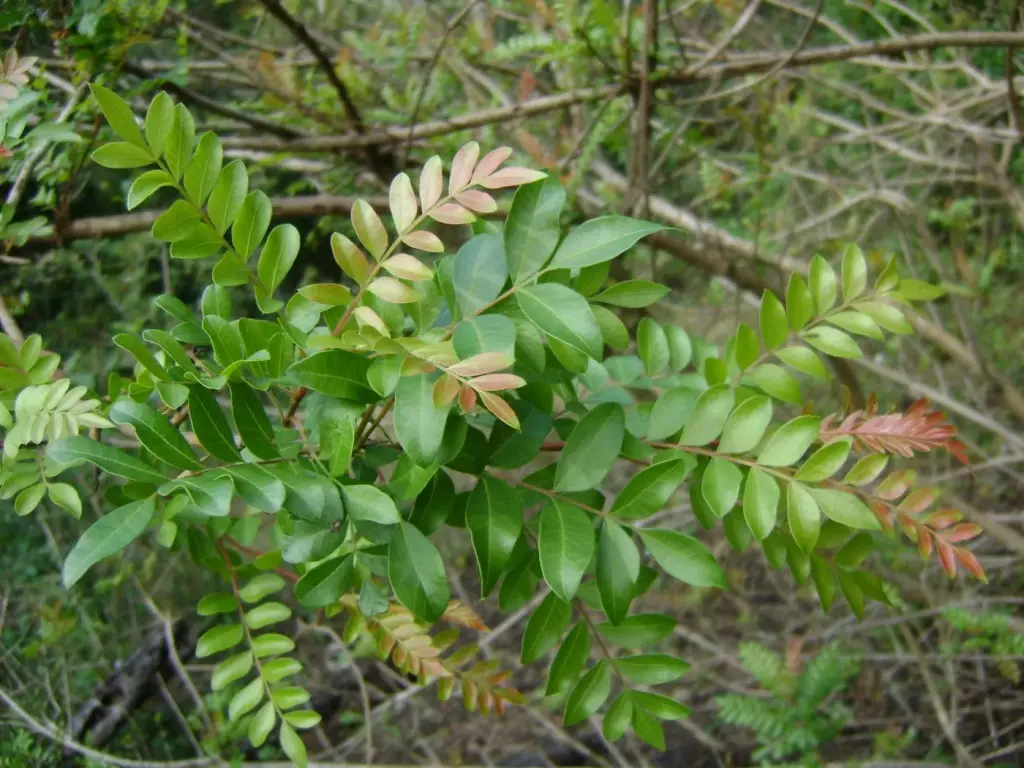
Pistacia lentiscus, also known as mastic tree or lentisk, is a species of flowering plant in the cashew family, Anacardiaceae. It is native to the Mediterranean region, including southern Europe, North Africa, and the Middle East.
The adaptability of Pistacia lentiscus to poor, rocky soils can be attributed to several factors:
-
It has a deep and extensive root system that enables it to access water and nutrients from deep within the soil. This allows the plant to survive in arid and nutrient-deficient conditions commonly found in rocky soils.
-
The tree exhibits a high level of drought tolerance, which is essential for its survival in poor soils where water retention is low. Its ability to withstand prolonged periods of drought makes it well-suited for growth in rocky environments.
-
This species has developed physiological and biochemical adaptations that enable it to cope with the harsh environmental conditions prevalent in rocky soils. These adaptations may include mechanisms for minimizing water loss, tolerating high levels of sunlight, and resisting soil erosion.
Pistacia mexicana can tolerate heat and arid environments

Pistacia mexicana, also known as the Mexican pistachio or wild pistachio, is a species of flowering plant in the cashew family, Anacardiaceae. It is native to the southwestern United States and northeastern Mexico, where it thrives in hot and arid environments.
The plant develops a taproot that can extend deep into the soil in search of water. This enables it to access groundwater and withstand periods of drought. Additionally, the deep roots provide stability and support for the plant in loose, sandy soils commonly found in arid regions.
Furthermore, Pistacia mexicana has evolved mechanisms to minimize water loss. Its leaves are often small and leathery, which helps reduce transpiration, the process by which water evaporates from the plant's surface. The plant may also have the ability to undergo temporary leaf shedding during extreme drought conditions as a survival strategy.
Another important aspect of Pistacia mexicana's tolerance to heat and arid environments is its ability to establish symbiotic relationships with certain soil microorganisms.
For instance, the plant may form associations with mycorrhizal fungi, which can enhance its access to nutrients and water in nutrient-poor and dry soils.
Pistacia x saportae has a unique flavor profile
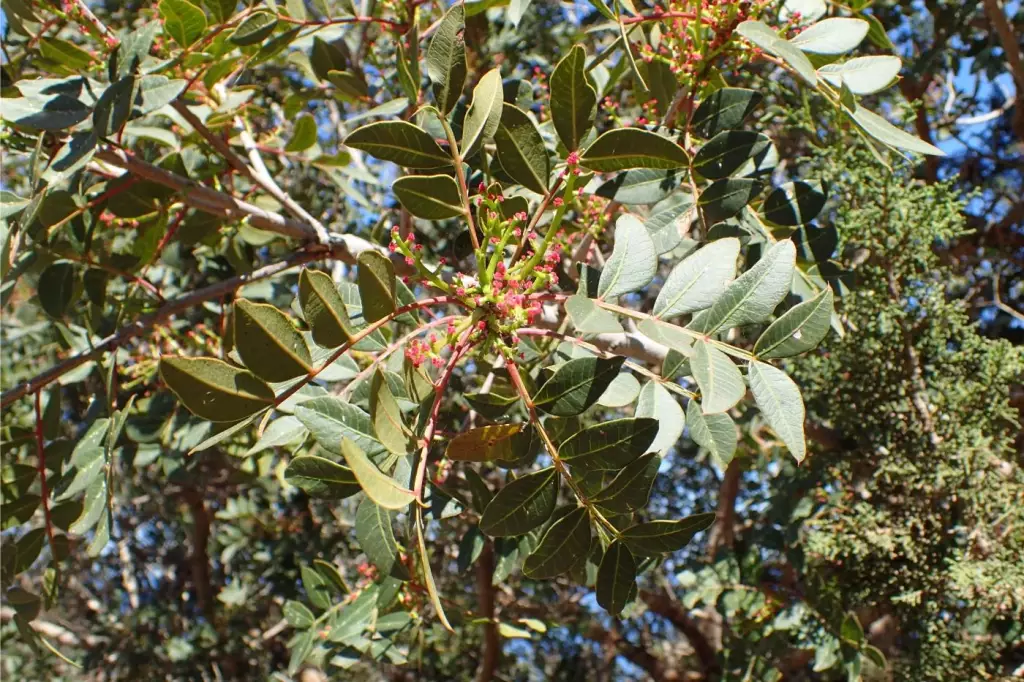
Pistacia x saportae, also known as hybrid pistachio, is a unique and versatile plant with a distinct flavor profile that lends itself well to a variety of culinary applications.
The flavor profile of this hybrid variety is characterized by its rich, nutty, and slightly sweet taste. This unique flavor makes it a popular choice for both sweet and savory dishes.
The nuttiness of the pistachio flavor adds depth and complexity to a wide range of recipes, while the subtle sweetness can enhance the overall taste experience.
In savory cooking, the pistachio flavor can be incorporated into meat dishes, salads, and sauces, adding a delightful nuttiness and texture. In sweet applications, the unique flavor of this variety can be utilized in desserts, pastries, and confections to provide a distinct and delicious taste.
Pistacia terebinthus is valued for its ornamental qualities and attractive foliage
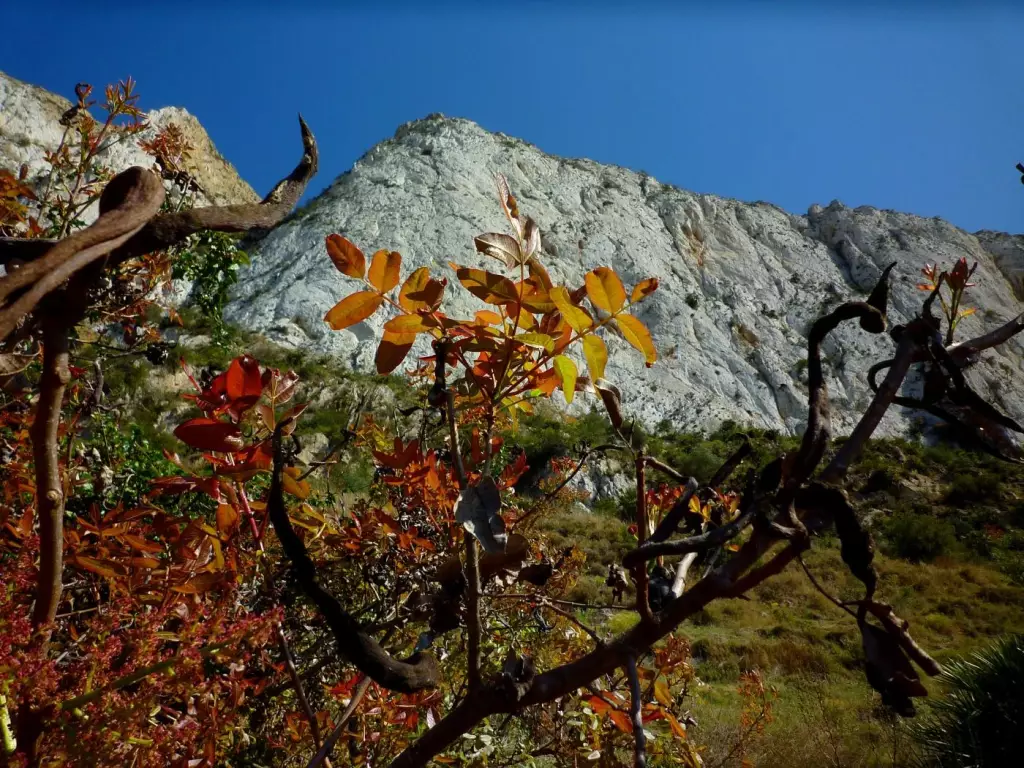
Pistacia terebinthus, also known as a terebinth or turpentine tree, is a species of flowering plant in the cashew family, Anacardiaceae. It is native to the Mediterranean region, including southern Europe, North Africa, and the Middle East.
It is often planted in parks, gardens, and urban landscapes for its aesthetic appeal. The tree's overall appearance, including its shape, foliage, and seasonal changes, contributes to its ornamental value.
The tree's leaves are pinnate, with multiple leaflets arranged along a central stem. The foliage is typically dark green and glossy, creating a lush and vibrant appearance. During the autumn season, the leaves may turn various shades of yellow, orange, and red, adding to the tree's visual appeal.
Additionally, the terebinth tree often produces clusters of small, inconspicuous flowers, followed by ornamental fruits. The fruits are small, round, and red to black, adding further visual interest to the tree, especially when they ripen and contrast against the foliage.
Pistacia vera is popularly known as the common pistachio
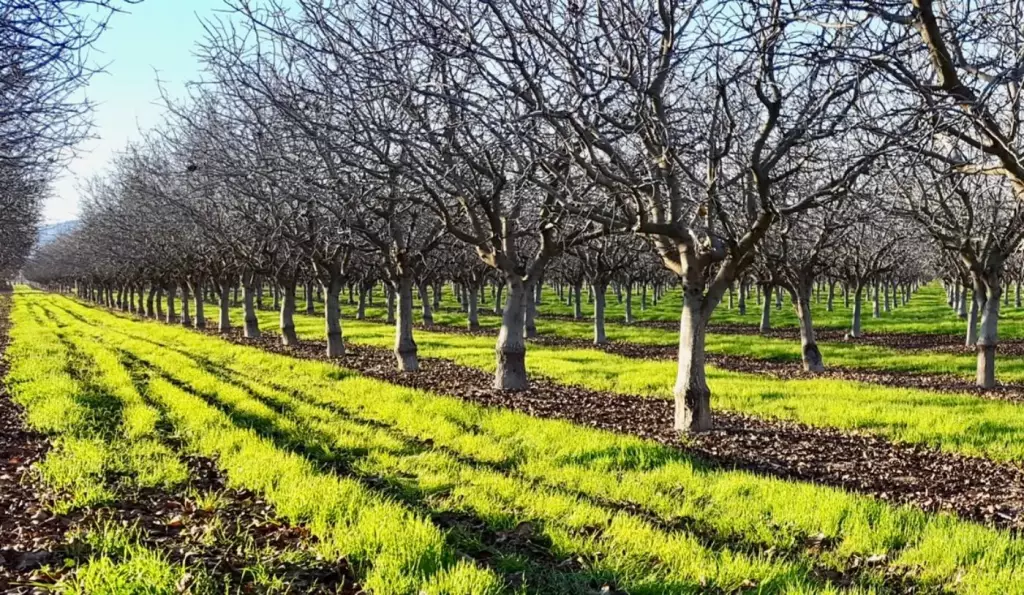
Pistacia vera, commonly known as the pistachio tree, is a species of flowering plant in the cashew family, Anacardiaceae. It is commercially cultivated primarily for its large, flavorful nuts, which are highly valued for their culinary and nutritional properties. The pistachio tree is native to the Middle East, particularly Iran, and has been cultivated for thousands of years.
The tree is a small to medium-sized deciduous tree, known for its long life span and resilience in harsh, arid climates. It typically reaches a height of 10 to 20 feet and has attractive pinnate leaves. The trees are dioecious, meaning that individual trees produce either male or female flowers, and both are required for fruit production.
The pistachio nut, which is the edible seed of the tree, is encased in a hard, beige-colored shell. Once the nuts mature, the shells split open, revealing the greenish-yellow kernel inside. These kernels are the part of the pistachio that is consumed and are known for their rich, slightly sweet flavor and distinctively vibrant green color.
Commercial cultivation of pistachios is widespread in regions with hot, dry climates, such as the Mediterranean, the Middle East, and parts of the United States, particularly California. The nuts are harvested by shaking the trees to dislodge the ripe nuts, which are then collected and processed.
Pistacia cucphuongensis is a species of tree that is endemic to Vietnam
This particular species is quite rare in cultivation, which means that it is not commonly grown or cultivated outside of its natural habitat.
One possible reason for the rarity of this species is its limited distribution in the wild, which can make it challenging to obtain seeds or plant specimens for cultivation.
Additionally, the specific environmental requirements of this species may not be easily replicated in cultivation, further contributing to its rarity outside of its native range.
Conservation efforts may play a crucial role in preserving and potentially increasing the cultivation of Pistacia cucphuongensis. By protecting its natural habitat and promoting sustainable cultivation practices, it may be possible to ensure the continued existence of this rare species both in the wild and in cultivation.
Pistacia weinmannifolia tree is renowned for its unique leaf shape and ornamental value
Pistacia weinmannifolia is a species native to regions of southwestern Asia, including Iran and Turkey. The most striking feature of Pistacia weinmannifolia is its pinnate leaves, which are composed of multiple leaflets arranged along a central stalk.
Each leaflet is elongated and lance-shaped, with a serrated margin, giving the foliage a distinctive and attractive appearance. The leaves are typically a glossy green color, and they provide an elegant and lush aesthetic to the tree.
In addition to its unique leaf shape, Pistacia weinmannifolia also offers ornamental value through its seasonal changes. In the spring and summer, the tree produces new growth that is a vibrant green, creating a fresh and lively display.
As autumn approaches, the leaves transition to shades of yellow, orange, and red, culminating in a stunning show of fall colors. This seasonal variation adds to the tree's appeal and makes it a desirable choice for landscaping in both residential and commercial settings.
Pistacia malayana is a species of pistachio native to tropical regions
Pistacia malayana is commonly found in warm, humid climates and is well-adapted to such environments. The tree is known for its attractive appearance and is often cultivated for its ornamental value as well as for its valuable wood and edible fruits.
The tropical origin of Pistacia malayana indicates that it is naturally found in regions with consistently warm temperatures and high humidity.
These conditions are essential for the optimal growth and development of the tree. In such climates, Pistacia malayana can thrive, producing lush foliage and potentially abundant fruit.
In warm, humid climates, this tree is able to take advantage of favorable conditions to support its growth and reproductive processes. The warmth allows for year-round growth, while the humidity helps to maintain adequate moisture levels for the tree.
Pistacia falcata produces small nuts with distinctive elongated shape
Pistacia falcata is a species of pistachio tree known for its small nut size and distinctive elongated shape. This deciduous tree is native to Central and Western Asia, where it thrives in arid and semi-arid regions.
The small nut size and elongated shape of the pistachio nuts produced by Pistacia falcata make it a unique and sought-after variety within the genus.
This characteristic makes it an attractive choice for those who prefer smaller nuts for culinary purposes. The smaller size can also make it easier to incorporate into various dishes and recipes, adding a delicate and nuanced flavor to the cuisine.
Additionally, the distinctive elongated shape of the nuts adds to the visual appeal of Pistacia falcata pistachios. The elongation sets them apart from the more commonly known round or oval pistachio nuts, making them visually striking and appealing for presentation in both culinary and decorative contexts.

